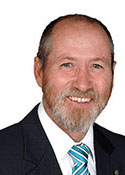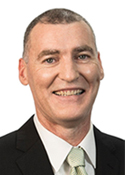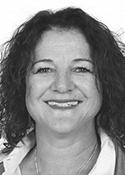Grey
Margin: Liberal 13.5%
Region: Outback, South Australia
In a nutshell: The seat covering most of the geographical area of South Australia has typified Labor’s decline in regional areas, transforming over the past three decades from safe Labor to safe Liberal.
Candidates in ballot paper order

|
SCOTT MARTIN ROWAN RAMSEY PHILLIP GOURLAY CHERYL KAMINSKI JILLIAN KAY MARSH ANDREA BROADFOOT |
The electorate of Grey has covered the bulk of South Australia’s land mass since the state was first divided into electorates in 1903, and it currently encompasses much the same territory as it did on its creation. The state’s eastern regions north of the Riverland were at times accommodated by Wakefield, but Grey has at all times accommodated the state’s west together with the “iron triangle” cities of Whyalla, Port Augusta and Port Pirie. Labor-voting Whyalla is the electorate’s largest centre with a population of around 22,000, while increasingly marginal Port Augusta and Port Pirie together with strongly conservative Port Lincoln on the lower Eyre Peninsula each have populations of slightly over 13,000. About 60 per cent of the electorate’s population is scattered through the remainder, the strongest concentration being in the rural conservative Yorke Peninsula. The latter area was added to the electorate from Wakefield when South Australia’s representation was reduced from 12 seats to 11 in 2004.
Grey’s industrial centres once made it a reliable seat for Labor, but their decline over recent decades has effected a decisive shift to the Liberals. Labor held the seat for all but one term between 1943 and 1993, the exception being after the landslide defeat of 1966. Laurie Wallis recovered the seat for Labor in 1969 and retained it by margins of 563 votes in 1975 and 65 votes in 1977, surviving on the latter occasion in the face of an unfavourable redistribution, and bequeathed the seat to Lloyd O’Neil in 1983. The turning point arrived in 1993, when the addition of the Clare Valley (since transferred to Wakefield) and the retirement of O’Neil opened the way for Barry Wakelin to win the seat for the Liberals on the back of a 4.3% swing. The Liberals’ position has been strengthening ever since, helping Wakelin to achieve swings of 6.4% in 1996, 1.9% in 2001 and 3.2% in 2004, with a correction of only 0.5% to Labor in 1998. Wakelin’s retirement in 2007 combined with the overall swing to Labor cut the margin that year from 13.8% to 4.4%, but the Liberal ascendancy has since been firmly re-established by successive swings of 6.7% and 2.4% in 2010 and 2013.
The member since 2007 has been Rowan Ramsey, who runs a farming property at Buckleboo on the Eyre Peninsula. When asked if Tony Abbott would lead the Liberals to the election in the wake of the February 2015 spill motion, Ramsey declined to give an affirmative response, and was reckoned to have supported Malcolm Turnbull in his successful challenge the following September. He will be opposed at the election by Labor candidate Scott Martin, organiser of the Australian Workers Union’s Whyalla branch, and Andrea Broadfoot, a Port Lincoln councillor.
Analysis by William Bowe. Read William’s blog, The Poll Bludger.


